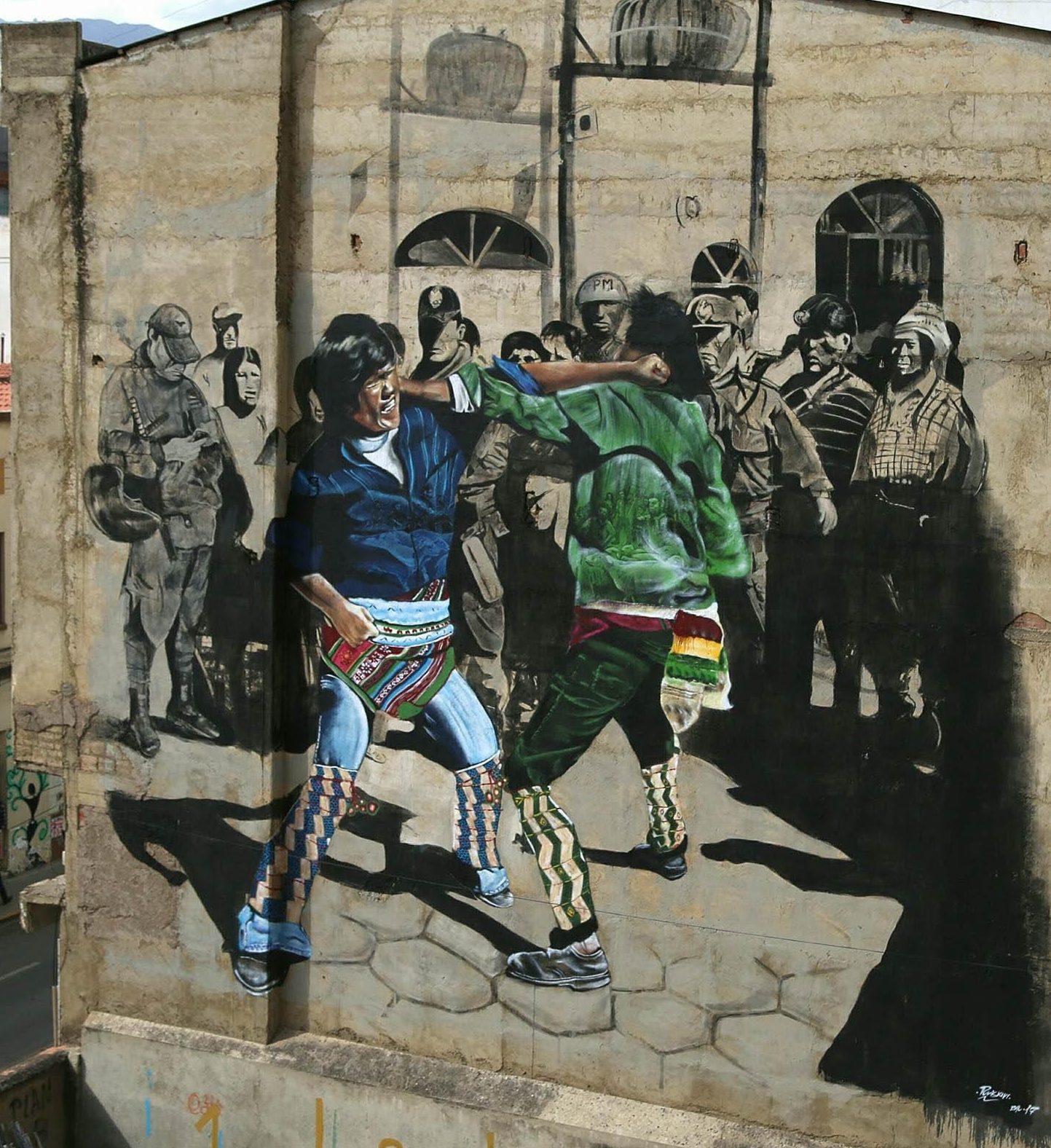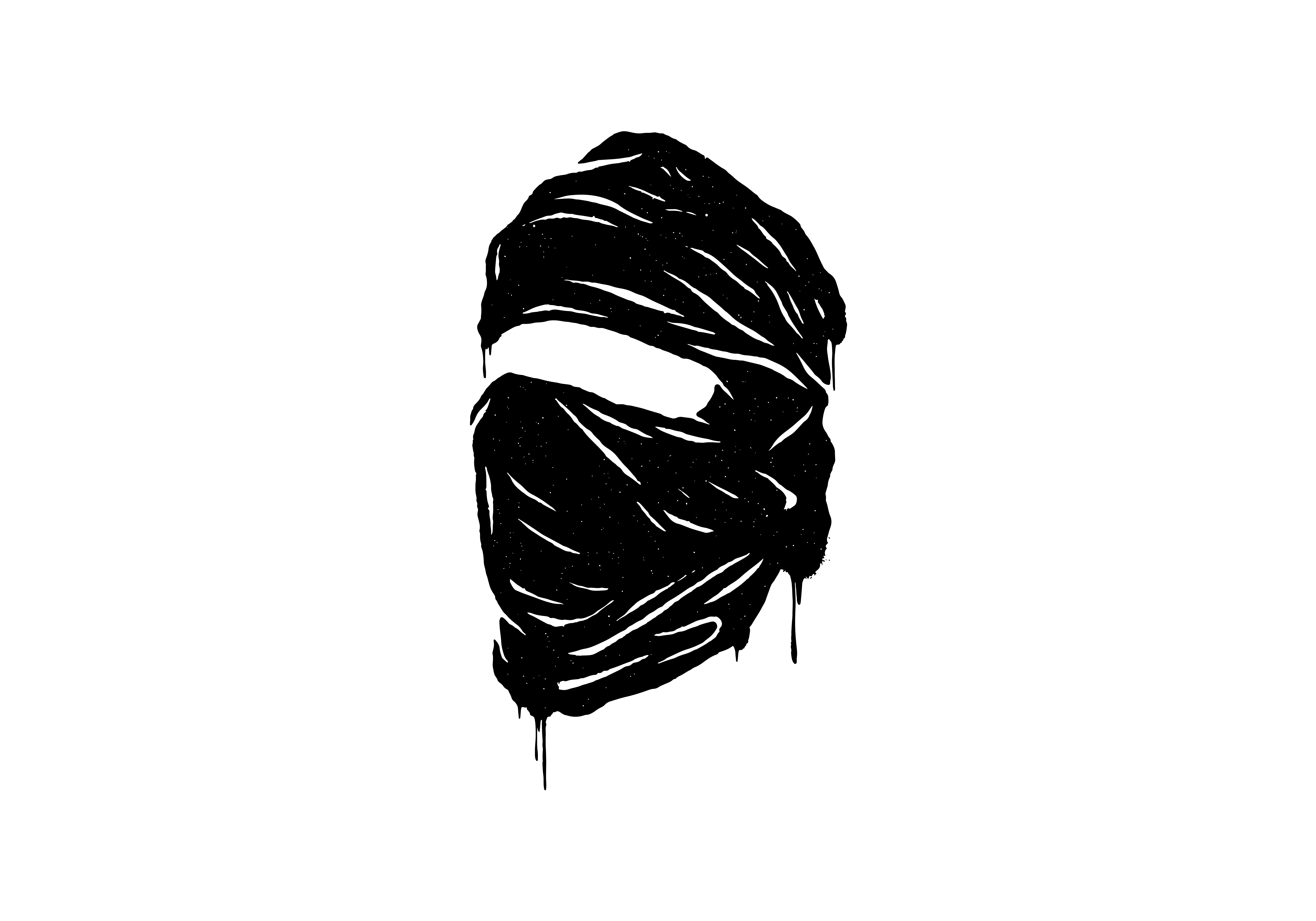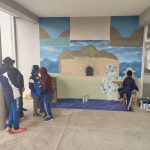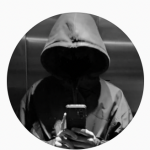Puriskiri, is a famous Bolivian street artist who I found in La Paz collega link, but he has painted in many places in Bolivia such as Cochabamba, a city very popular for urban art. This also happens to be his hometown, where he has painted over 150 artworks.
Unfortunately, I didn’t go to Cochabamba but I found out about his artworks within the Cementerio of La Paz where he is one of the artists of Ñatinta Festival.

Artists’s Vision
Puriskiri approached Urban Art at the age of 14 when he started using spray paint and the walls of Cochabamba became his canvas. He primarily uses dark colors in his paintings.
His style is delicate, and the subject’s expressions are enigmatic. The Artist is deeply connected with the people of his country and pays homage to them in every artwork: men at work, children playing, animals in the fields, and women in traditional dress “The Cholitas,” the symbolic figure for Bolivia.
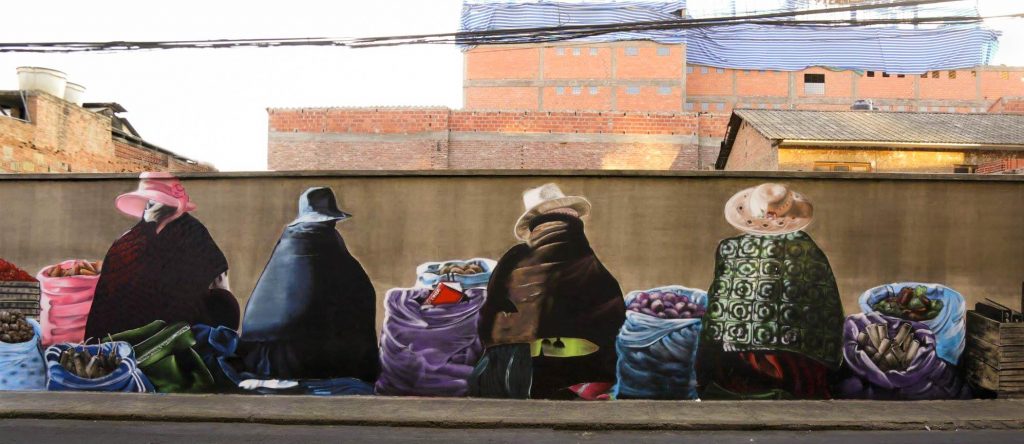
Puriskiri organizes workshops with children and paints with them in remote places, teaching them traditional local things to strengthen their identity.
One of his projects involved the Urus community, one of the oldest villages in South America about to disappear, who speaks his own language. They live close to Lake Poopo and used to fish, but the lake is now dry, so they were forced to give up fishing for the mine.
Puriskiri created this specific project with an NGO working with the Urus community, where children were involved in painting.
“I could, for a moment show them that there is another horizon, and if they want they can do all they dream”
Puriskiri is also part of a crew known as KSR, whose other important member is the artist Oveja 213(link).

Q/A INTERVIEW WITH PURISKIRI

What is revealed behind the meanings of “PURISKIRI”?
Upon entering the world of graffiti as an artist, I knew the need of having a pseudonym, so when I gave a reading to the city walls at that time (2009), I realized that most of them had chosen their names in English. I began to think about the words in Quechua that they used with me as a child. Puriskiri was the first thing that came to my mind.
Its meaning is “walker”, the most appropriate term to me, for the type of painting I was beginning to do.
When did you start painting on the street, and where?
From 2007 to 2008, I was an active part of a revolutionary youth group.
We talked about the political and cultural situation, so after drawing our conclusions, we decided to transcribe the walls with what we thought. With the spray we could share our thoughts with other people. That was the period when I started painting on the street.

What else should we know about Puriskiri’s background?
The spray technique seemed very difficult to me at the beginning, so I increased my knowledge of it. I attended a course where I learned a lot about the art of graffiti, the different styles in terms of lettering, and the most important people that I stumbled upon over time.
What is hidden behind your artworks? What do you want to tell those who observe your murals?
After I started painting on the street, I understood that this could be an act of political responsibility, as in an advertising billboard. I could create a message, and I was responsible for it, so the question that was running through my head was what to paint? I chose to take advantage of the beauty that the street offers, such as women’s clothing and the animals we live with; each of these things have become my motivation.
I want people to be able to get in touch with this beauty and our daily life here, and then admire a mural without anyone trying to sell anything.
Can you tell us more about Bolivian Culture and how Graffiti is related to it?
Our culture encompasses all aspects of our daily life, and graffiti as art is part of this expression in Bolivia. They cannot be exempt from this.
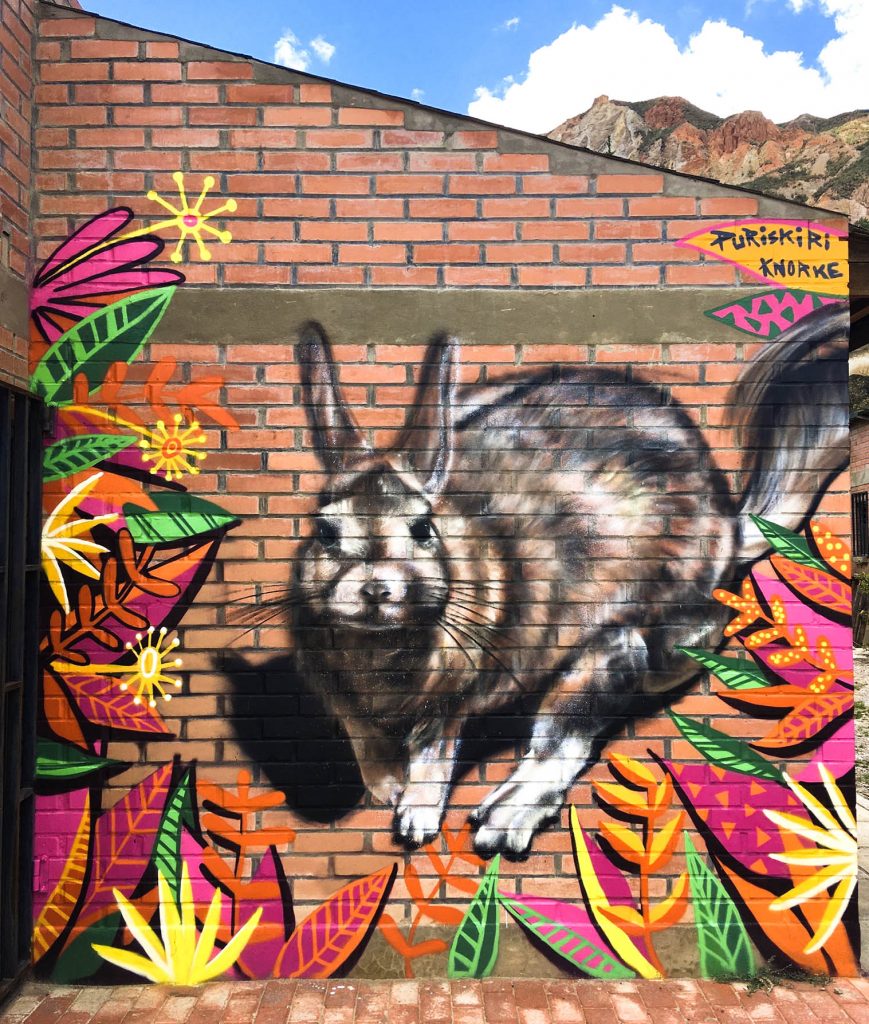
What about the Ñatinta Festival? I love his concept! I’ve never seen anything like it!
I think that the peculiarities of this festival make it unique in the world. The welcome that people have given us to paint in the cemetery is something that never ceases to amaze me. The first year I was worried about how people visiting their dead would take the presence of a street art festival in a sacred place, but the welcoming has been excellent and continues to be year after year.
Have you ever attended any other Street Art Festival? If yes, where?
I have been lucky because I have participated in many street art festivals: Lima in Peru; Salta, Iguazu, and Chimbas in Argentina; Milan, Rome, and Santa Croce in Italy; and Madrid and Barcelona in Spain.
I’m also very interested in Cochabamba. What is the difference between this city and La Paz in terms of street art?
I think La Paz is a more aggressive city in terms of street painting. It’s also more touristy than Cochabamba. The latter hosting a higher number of graffiti artists who come to Cochabamba and leave their mark, as well as many local graffiti artists who live here.
What are you planning for the future?
My plan for the future is to paint, paint and paint a lot.
